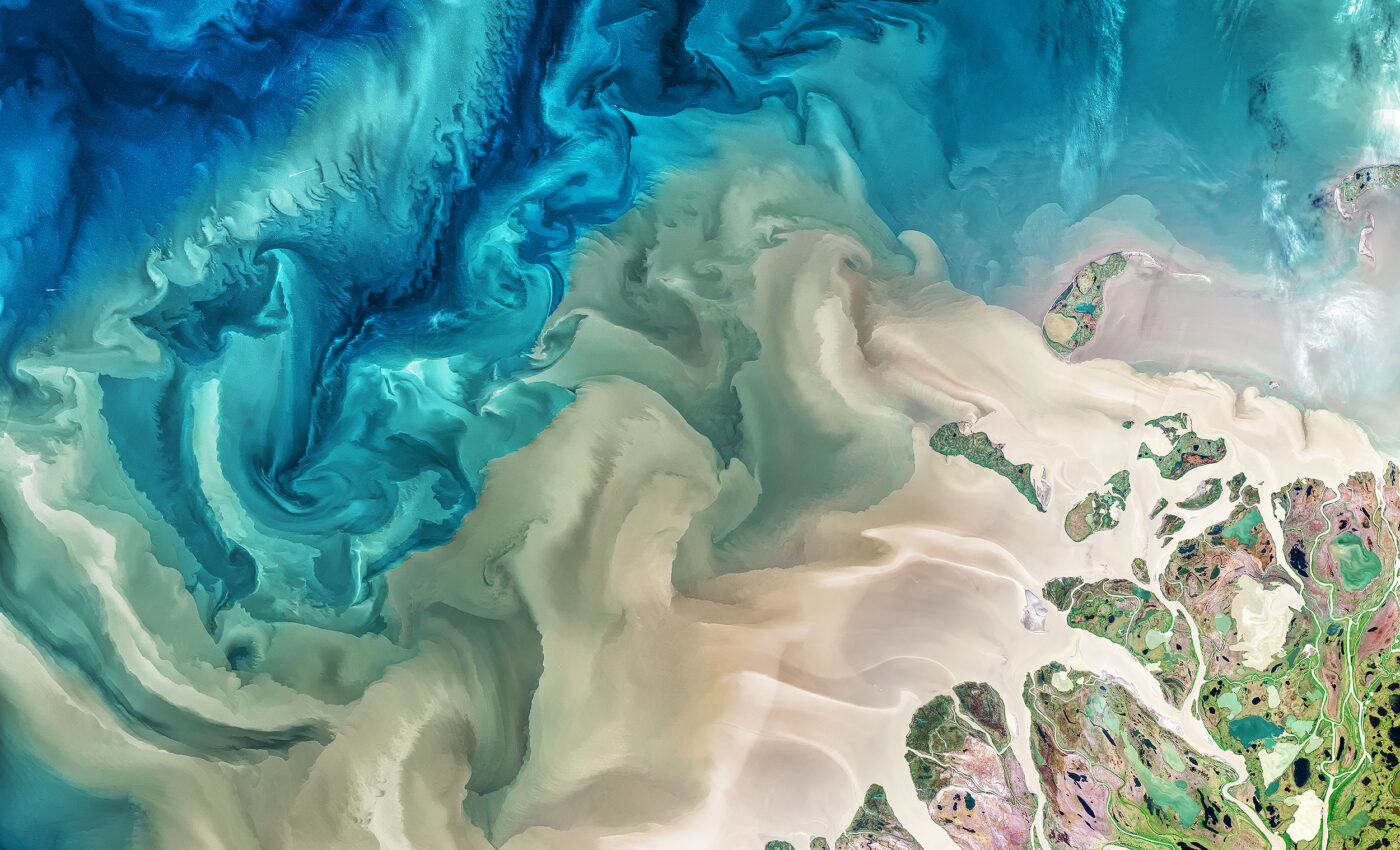
Arctic waters are emitting more carbon as they continue to warm
One of North America’s largest rivers, Canada’s Mackenzie River, is driving intense carbon dioxide emissions in the Arctic Ocean, according to a recent study. The Arctic Ocean, despite being the world’s smallest ocean, plays a significant role in influencing climate change.
It is estimated that the cold waters of the Arctic absorb as much as 180 million metric tons of carbon per year, making it one of Earth’s critical carbon sinks.
However, recent findings from a NASA study reveal that thawing permafrost and carbon-rich runoff from the Mackenzie River are triggering the release of more carbon dioxide than the ocean can absorb.
Role of the Arctic Ocean as a carbon sink
The study, published earlier this year, sheds light on how scientists are using advanced computer modeling techniques to study rivers like the Mackenzie, which flows into the Beaufort Sea, a region of the Arctic Ocean.
The Mackenzie River and its delta have experienced significantly warmer temperatures in recent years, resulting in increased melting and thawing of waterways and landscapes.
As this vast river system concludes its thousand-mile journey in the marshy corner of Canada’s Northwest Territories, it acts as a conveyor belt for mineral nutrients, organic matter, and inorganic matter.
This material then drains into the Beaufort Sea as a mixture of dissolved carbon and sediment, with some of the carbon being eventually released into the atmosphere through natural processes.
The ECCO-Darwin model
Previous assumptions characterized the southeastern Beaufort Sea as a weak-to-moderate carbon dioxide sink, where it absorbs more carbon dioxide than it releases. However, due to limited data, there has been significant uncertainty surrounding this perception.
To address this data gap, the research team employed a global ocean biogeochemical model called ECCO-Darwin, which was developed jointly by NASA’s Jet Propulsion Laboratory in Southern California and the Massachusetts Institute of Technology.
This model assimilates nearly all available ocean observations collected for over two decades using sea- and satellite-based instruments. The scientists utilized the ECCO-Darwin model to simulate the discharge of fresh water and the elements and compounds it carries, including carbon, nitrogen, and silica, spanning a period of almost 20 years (from 2000 to 2019).
Surprising amount of carbon emitted from the Arctic
Their findings indicate that the river discharge is triggering intense outgassing in the southeastern Beaufort Sea, resulting in a net carbon dioxide release of 0.13 million metric tons per year. This amount is roughly equivalent to the annual emissions from 28,000 gasoline-powered cars.
The release of carbon dioxide into the atmosphere varies with the seasons, with warmer months exhibiting more pronounced outgassing due to higher river discharge and reduced sea ice coverage, allowing the gas to escape instead of being trapped.
This research sheds light on the role of rivers and coastal areas in the Arctic carbon cycle. Lead author Clément Bertin, a scientist at Littoral Environnement et Sociétés in France, explains, “With our model, we are trying to explore the real contribution of the coastal peripheries and rivers to the Arctic carbon cycle.”
Implications for Arctic carbon emissions
The implications of this study reach beyond the specific region examined. Roughly half of the Arctic Ocean is comprised of coastal waters, where land and sea embrace in a complex interplay.
Understanding the dynamics of carbon exchange in these regions is crucial for comprehending the environmental changes unfolding in the Arctic.
The rate of warming in the Arctic since the 1970s has been at least three times faster than in any other part of the world. This rapid warming has resulted in transformations in its waters and ecosystems. Some of these changes promote increased carbon dioxide outgassing, while others stimulate greater carbon uptake.
For example, the thawing of Arctic lands and increased melting of snow and ice have caused rivers to flow more rapidly. Consequently, more organic matter from permafrost and peatlands is flushed into the ocean, contributing to carbon release.
On the other hand, microscopic phytoplankton near the ocean surface are taking advantage of the shrinking sea ice to bloom in the newfound open water and sunlight. These marine organisms, akin to plants, capture and store atmospheric carbon dioxide during photosynthesis.
The ECCO-Darwin model is being employed to investigate these blooms and the intricate ties between ice and life in the Arctic.
In summary, scientists diligently monitor these significant and seemingly subtle changes in the Arctic and beyond. Our ocean waters remain a critical buffer against a changing climate, sequestering up to 48% of the carbon emissions produced by burning fossil fuels.
—–
Like what you read? Subscribe to our newsletter for engaging articles, exclusive content, and the latest updates.
Check us out on EarthSnap, a free app brought to you by Eric Ralls and Earth.com.
—–













